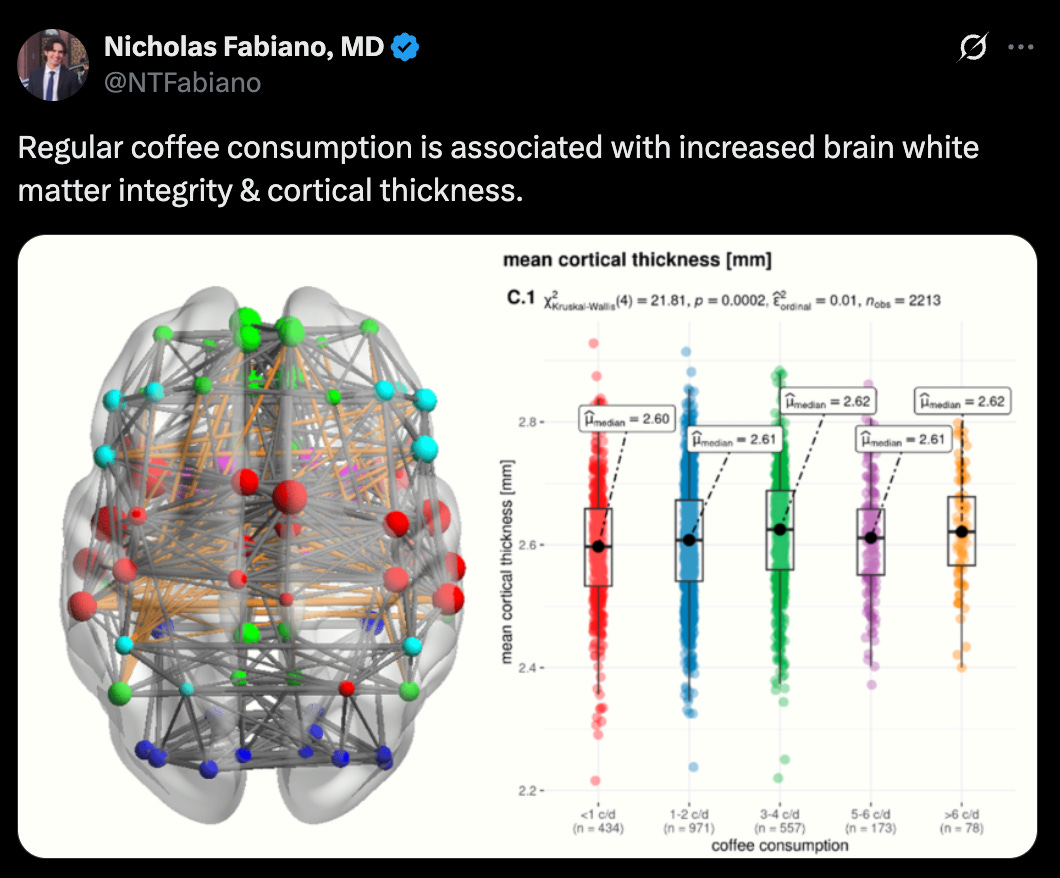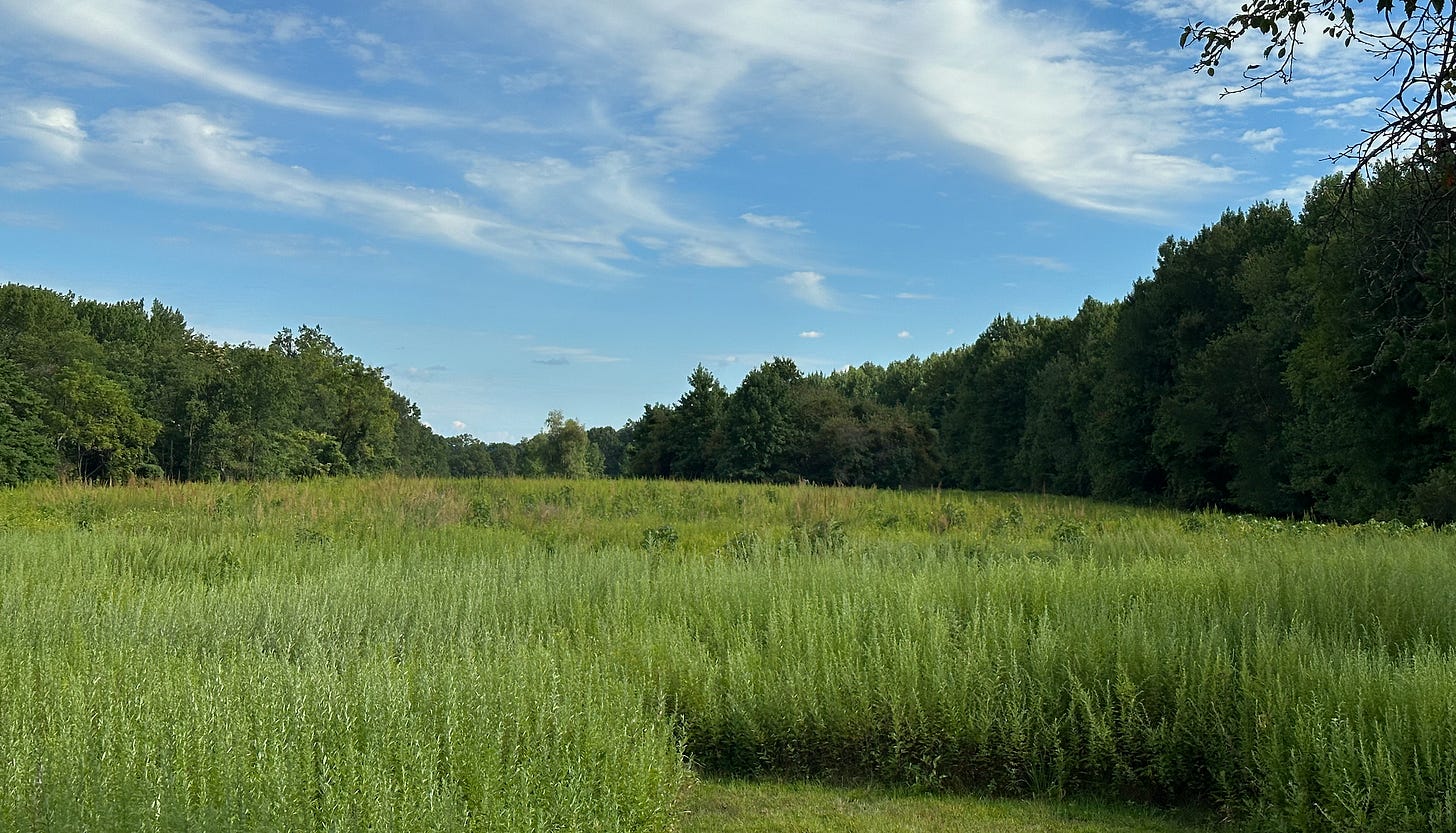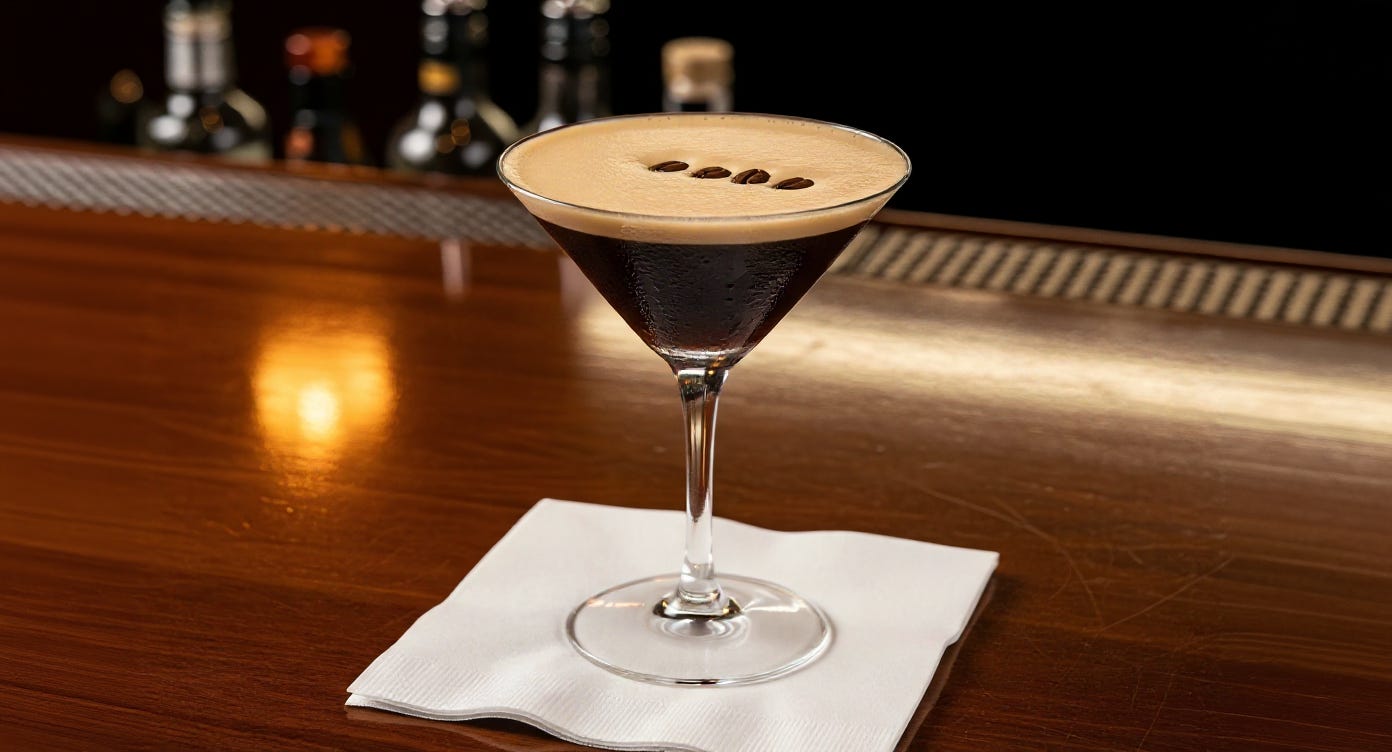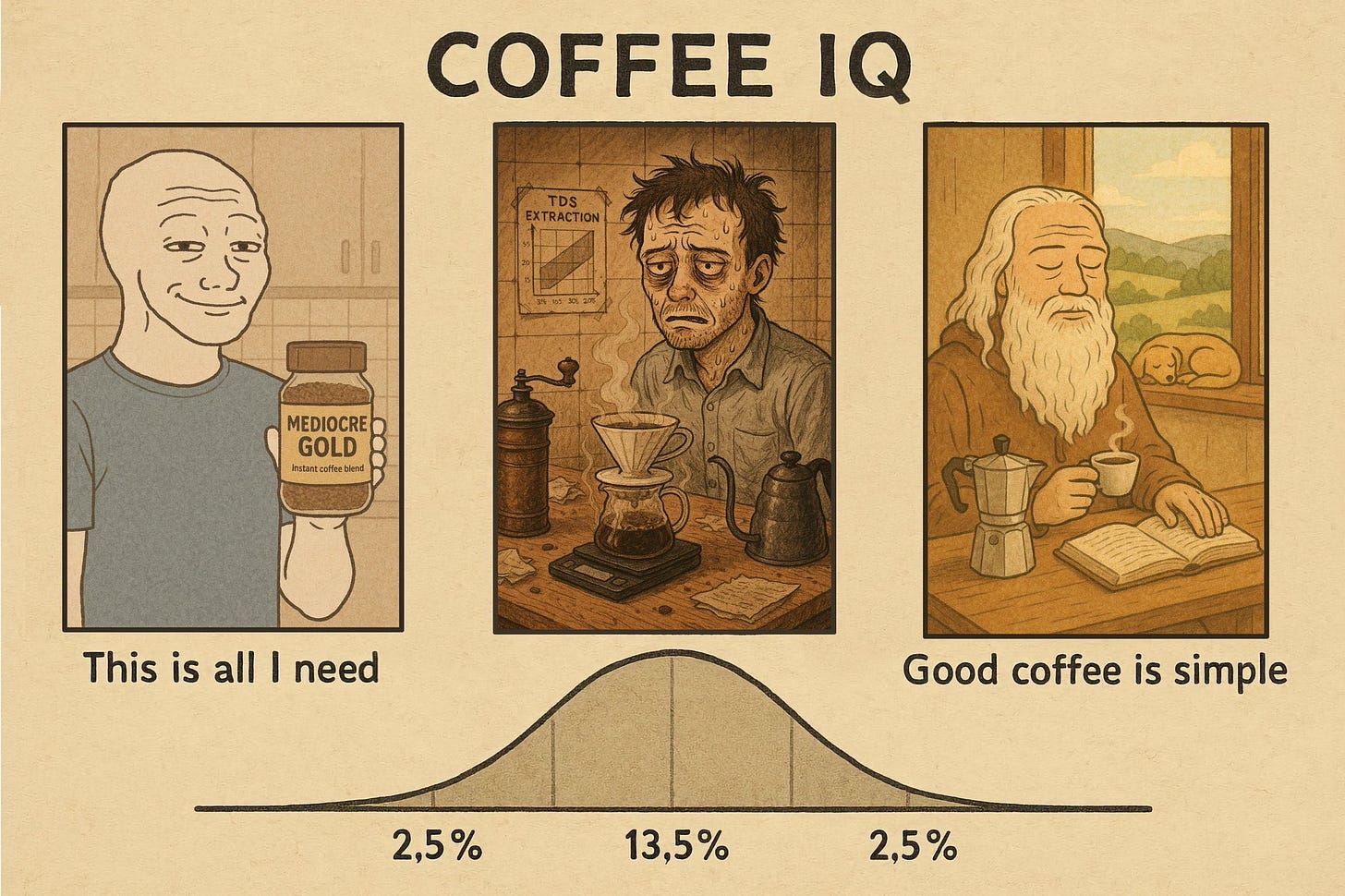Become Useful
What coffee taught me about work, luck, and getting invited along.
Back when I was younger, I like to think I made some of the best cappuccino and espresso in the entire Bronx.
Picture this, we were at Enzo’s, a family spot with white tablecloths that somehow never stayed white for long, and a line at the bar even when the dining room was full.
Mayor Bloomberg once said Enzo’s was the best Italian restaurant in the Bronx. If that is even half true, then some small share of that compliment belongs to the crema on my shots, because the coffee was part of his experience and I was the one pulling it.
The machine looked like a chrome locomotive. It hissed like the B and D trains rolling into Fordham Road, on the way to Arthur Ave, the real Little Italy where there is still an Enzo’s. The gauge hovered near nine bars like a held breath. I would knock the portafilter against the rubber, dose, tamp just so, lock it in, listen for that first tiger striping in the stream, then count quietly in my head and let it run a little longer if the beans were fussy. Purge the wand, I never let stale milk touch the pitcher. A cappuccino lives or dies by the foam. In Albanian we call that shkuma, which is the right word because when you get it right it is not just foam, it is architecture. If you mess that up, the cappuccino is cooked as the kids say today.
But more than that, if you mess up the espresso, God forbid if it’s thin, then the espresso martini is done and that is a more expensive mistake. Because now you’ve cooked two different drinks at once.
Back then I did not think too hard about why coffee was so special, I just tried to make it as well as I could.
But since then coffee and I have gotten to know each other more like two people who keep bumping into each other. And have no choice but to become friends. The story starts in Ethiopia, which is the origin point for the two big-lineage beans, Arabica and Robusta, and also for the goat-herder named Kaldi in the ninth century for whom myth has it he noticed his animals getting lots of energy after munching the plant’s red cherries.
But the chemistry behind coffee is less folklore and more like a heist. Caffeine impersonates a molecule in your brain called adenosine. Adenosine wants you to feel done for the day. Caffeine shows up wearing adenosine’s outfit, takes the seat, keeps the lights on.
Hank Green goes into a little more depth on the chemistry of caffeine in a YouTube video. It’s a fun video, it inspired me to write this because he calls caffeine a bug poison.
But I think, for coffee, it is more nuanced than that.
If poison were the whole story, the plant would have stopped at bitter leaves. Coffee went further. It braided sweetness around the seed, scented the air, and tuned the chemistry until attention felt like clarity. Call it self improvement if you want. Hank explains the toxin to bugs well, which is mostly due to dosage. But I am arguing coffee’s trick is not menace, it is magnetism.
What made us build a civilization of morning cups was sweet fruit, memorable aroma, energy, and a seed that does no harm to humans at normal doses, and asks to be brought along.
People obliged because mornings worked better with this plant. Traders packed it’s seedlings, first in the middle east, then growers coaxed them in new soils, and by the time the boats finished crossing the oceans, the outcome was inevitable.
Coffee took root in places that were not Ethiopia and became the kind of immigrant that makes itself useful. In South America it loved volcanic soil and high altitudes and mornings that start in fog. The plant did not plan port cities or plantations or the TikTok’s with the fancy coffee setups. It slowly made itself more useful and humans did the rest.
But I noticed that this keeps happening to me in smaller, human-sized ways too.
One night at Enzo’s, a regular who loved my espresso martinis said, “Louie, did you not graduate with a computer science degree, why are you still bartending here?” It was 2008 and the job market felt like a locked door. But after that conversation, she introduced me to her son who ran a team of software engineers. He hired me.
Coffee did not write the offer letter, but it mixed into the espresso martini I crafted that made the conversation happen, which is the kind of causality that feels silly until you notice how many other things start that way.
Years later, in Bentonville, Arkansas, I walked a town square that felt like a coffee factory in disguise. I was brought there by the execs after Walmart acquired Jet, I must’ve been useful to them in some way. The Waltons have their world there, and inside that world there is serious coffee. I tasted beans people spoke about with the reverence usually reserved for aged scotch. Lineage that traces to the old stock. Small-batch lots from Central America with judges’ ribbons. A cup in a place that looks nothing like Ethiopia, linked to it by the bean, heat, water.
But each time I bump into coffee it teaches me something new.
But perhaps the most important lesson is become useful, like coffee, and doors start behaving differently.
In fact, any time I have been invited into anything it was usually because I was useful in some way. When I was invited to become a partner and help build the Small Bets community, it was not because I had a master plan. I had been living that life already, creating a handful of projects, some worked and some did not, but living the philosophy and learning. I made my first hundred thousand dollars in internet money that first year by shunning the “bet it all on one thing” VC funded path. I must’ve been useful in some way, or I wouldn’t have been invited. But more recently, that experience with helping build small bets led to being invited to help build the Act Two program.
Coffee did not know it would be hauled across oceans and planted on slopes in Colombia and Guatemala and Brazil. It iterated. A little less toxicity for the animals that help, a sweeter fruit to bribe a bird. It did not know a mayor would praise an Italian restaurant in the Bronx or that some kid behind a bar would think foam actually mattered. Coffee was only becoming more itself, more useful, more likely to be brought along.
There is a lesson there for me and for you. Nobody knows where you will be in a few years. You might end up somewhere that feels nothing like where you are now, and still every part of the path will be visible in retrospect.
So become coffee. In the thing you are doing now, get a little better each time. By becoming better you become the kind of useful that people want to bring along. And you need people to accomplish anything worth accomplishing in this world. If the shot needs twenty-eight seconds because the beans are fussy, count the seconds in your head and give it twenty-eight. If the foam invites architecture, build it. If someone needs a hand on the next release, write the doc and ship the fix. In the end, coffee is just iterating on and offering a fruit. Offer fruit.

I drank a lot of coffee to get here, over many mornings and some nights. The great secret at the end is not a secret, it’s simple. But in the end just give me some black gold. No milk. No sugar. Nothing. Just me, and the coffee, and the computer, and I’ll try my best to make something a little useful.
Thanks for reading.
—Louie
P.S. you might think me bougie about coffee after all this. There is a meme that good coffee is just coffee:
I have been all over the curve. I have had the oat milk cortado silky as satin in downtown NYC, the single-origin pour-over that tasted like a grapefruit took a philosophy class, the macchiato so tiny it felt like a secret. The Turkish coffee that can be used to tell fortunes.
But now I circle back to black. Just me and the cup. No milk, no sugar, no story besides the one the bean has to tell. And it works great.





Wow. You’re writing has progressed out of sight l Louie. I loved this.
I think silicon valley would still be fruit orchards without coffee! What a beautiful love letter - all I want are my apps to be useful